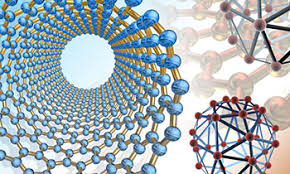Mechanical and Materials Engineering, Department of

Department of Mechanical and Materials Engineering: Faculty Publications
Document Type
Article
Date of this Version
2019
Citation
Published in Acta Materialia 167 (2019), pp 248–256.
doi 10.1016/j.actamat.2019.01.037
Abstract
Nanotwinned metals exhibit outstanding radiation tolerance as twin boundaries effectively engage, transport and eliminate radiation-induced defects. However, radiation-induced detwinning may reduce the radiation tolerance associated with twin boundaries, especially at elevated temperatures. Here we show, via in-situ Kr ion irradiation inside a transmission electron microscope, that 3 at. % Fe in epitaxial nanotwinned Cu (Cu97Fe3) significantly improves the thermal and radiation stability of nanotwins during radiation up to 5 displacements-per-atom at 200 °C. Such enhanced stability of nanotwins is attributed to a diffuse 9R phase resulted from the dissociation of incoherent twin boundaries in nanotwinned Cu97Fe3. The mechanisms for the enhanced stability of twin boundaries in irradiated nanotwinned alloys are discussed. The stabilization of nano-twins opens up opportunity for the application of nanotwinned alloys for aggressive radiation environments.
Includes supplemental Appendix.
Video files are attached below.
Appendix A
SV1 Comparison of NT-Cu and Cu97Fe3 under irradiation.mp4 (8426 kB)
Suppl video #1
SV2 NT-Cu_Self-healing capacity of CTB3.mp4 (4019 kB)
Suppl video #2
SV3 Self-healing CTB in NT-Cu97Fe34.mp4 (7753 kB)
Suppl video #3
SV4 NT-Cu_Rapid migration of a tiny ITB5.mp4 (5300 kB)
Suppl video #4
SV5 NT-Cu_Gradual migration of a long ITB6.mp4 (5437 kB)
Suppl video #5
SV6 ITB-defect interaction in NT-Cu97Fe37.mp4 (9479 kB)
Suppl video #6
Included in
Mechanics of Materials Commons, Nanoscience and Nanotechnology Commons, Other Engineering Science and Materials Commons, Other Mechanical Engineering Commons


Comments
Copyright © 2019; published by Elsevier Ltd on behalf of Acta Materialia Inc. Used by permission.